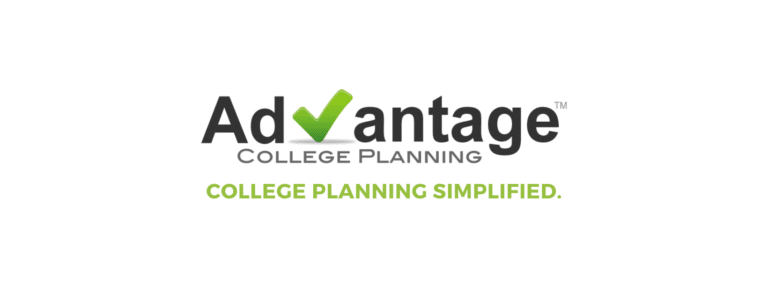What is your Target Audience? (Including Examples)
Understanding your target audience is foundational to the success of any business. It influences everything from product development to marketing strategies.
In this blog post we’re diving into explores what a target audience is, why it’s essential, and how you can identify and segment your own to better align your business efforts.
Target Audience: Definition
A target audience is a specific group of consumers that a business aims to reach with its products, services, and marketing efforts. This group is defined based on shared characteristics that make them the most likely to be interested in what the business offers.
The identification of a target audience involves analyzing and segmenting potential customers based on various key factors. These factors typically include demographics (like age, gender, and income), psychographics (such as interests and values), geographic location, and behavioral data (including purchasing habits and brand loyalty).
Understanding the target audience is crucial for businesses because it allows them to tailor their marketing strategies effectively. By focusing on the specific needs, preferences, and behaviors of their target audience, businesses can design marketing campaigns that are more likely to resonate and convert potential customers into loyal consumers.
Components of a Target Audience
A target audience can be broken down into several key components, each of which plays a vital role in defining the specific group of consumers a business aims to reach:
Demographics: This component includes basic statistical data such as age, gender, income, education, and occupation. These factors are crucial for identifying the general characteristics of an audience, helping marketers to segment the population into groups more likely to be interested in their products or services.
Psychographics: Going beyond basic demographics, psychographics involve deeper psychological aspects including interests, lifestyles, values, and attitudes. This information helps businesses understand why their target audience may prefer certain products or services, guiding the development of more resonant marketing strategies.
Geographics: The geographical location of the target audience defines this component. It includes region, climate, and urban or rural settings. Geographics determine the physical boundaries within which the target audience resides and often influences their buying habits and product needs.
Behavioral Data: This includes insights into the buying behaviors, purchasing habits, product usage, and brand loyalty of the target audience. Behavioral data are critical for understanding how, when, and why the audience engages with certain products or services, allowing for more effective and timed marketing interventions.
By understanding these components, businesses can craft highly targeted and effective strategies to reach and engage their ideal customers, leading to better business outcomes overall.
Why Identifying Your Target Audience Is Important
Identifying your target audience is essential for optimizing resources within a business. By focusing marketing efforts and investments where they are most likely to resonate, businesses can avoid wastage and maximize the impact of their budget. This strategic allocation leads to more efficient and targeted marketing strategies.
A well-defined target audience enables businesses to tailor their marketing messages to specific needs, interests, and preferences, significantly enhancing engagement and response rates. This personalization is not only more appealing but also more effective at capturing attention and fostering customer engagement.
Furthermore, this focused approach aids in product and service design, ensuring that offerings directly address the wants and needs of the target group. This alignment increases customer satisfaction, enhances loyalty, and boosts sales performance, giving businesses a competitive advantage.
In addition, knowing your target audience helps to build stronger customer relationships through personalized communication and services tailored to meet specific expectations and preferences. It also influences critical business decisions such as choosing locations, setting prices, and planning expansions, making each decision more aligned with the demands of primary consumers.
Overall, identifying your target audience ensures that business operations are efficient and strategically positioned for long-term success, making it a foundational aspect of effective business management.
How to Identify Your Target Audience
Identifying a target audience is a critical step for any company looking to optimize its marketing strategies and product offerings. Here’s how a company can effectively identify its target audience:
Market Research: Companies begin by conducting comprehensive market research. This involves gathering data through surveys, focus groups, and interviews to understand potential customers’ preferences, behaviors, and demographics. Market research helps in recognizing patterns and trends that define the most likely buyers of the product or service.
Customer Data Analysis: Analyzing existing customer data is another vital method. Businesses examine their current customer base to identify common characteristics and purchasing behaviors. This analysis often provides insights into who enjoys and buys the company’s products, which can then be applied to target similar new customers.
Segmentation: After gathering and analyzing data, the next step is segmentation. This process divides the broader market into smaller segments based on shared characteristics like age, location, spending habits, and interests. Segmenting helps in focusing marketing efforts on specific groups that are more likely to convert into sales.
Persona Development: Creating detailed customer personas is a useful tool in this process. Personas are fictional characters that represent ideal customers based on the collected data. They help businesses visualize the target audience, making it easier to tailor marketing and product development strategies.
Competitor Analysis: Observing and learning from competitor strategies can also provide valuable insights. Companies look at who their competitors are targeting and how they are positioning their products. This information can help identify gaps in the market or opportunities to appeal to a segment of the market that competitors may have overlooked.
Target Audiences Examples
Pilates Fitness Studio
Primarily targets women aged 25-55 who are interested in fitness, wellness, and maintaining an active lifestyle.
This group likely values health and appearance and might include busy professionals, young mothers, or older women seeking low-impact exercises to maintain flexibility and strength. They typically have a middle to high income, enabling them to afford membership in a specialized fitness studio.
IV Therapy Clinic
Focuses on health-conscious individuals aged 30-60 who are interested in wellness trends and preventative health care.
This audience might include professionals with stressful lifestyles, athletes looking to expedite recovery, or middle-aged to elderly individuals seeking to boost their energy levels and immune system. They are generally well-educated and willing to invest in health innovations that promise faster recovery times and improved overall vitality.
Pet Grooming Company
Targets pet owners, specifically dog and cat owners who treat their pets as part of the family.
This group is likely to be composed of individuals or families who reside in urban or suburban areas and possess disposable income to spend on pet care services.
The target demographic might include young professionals, families with children, and elderly pet owners who are particularly attentive to their pets’ hygiene and appearance.



